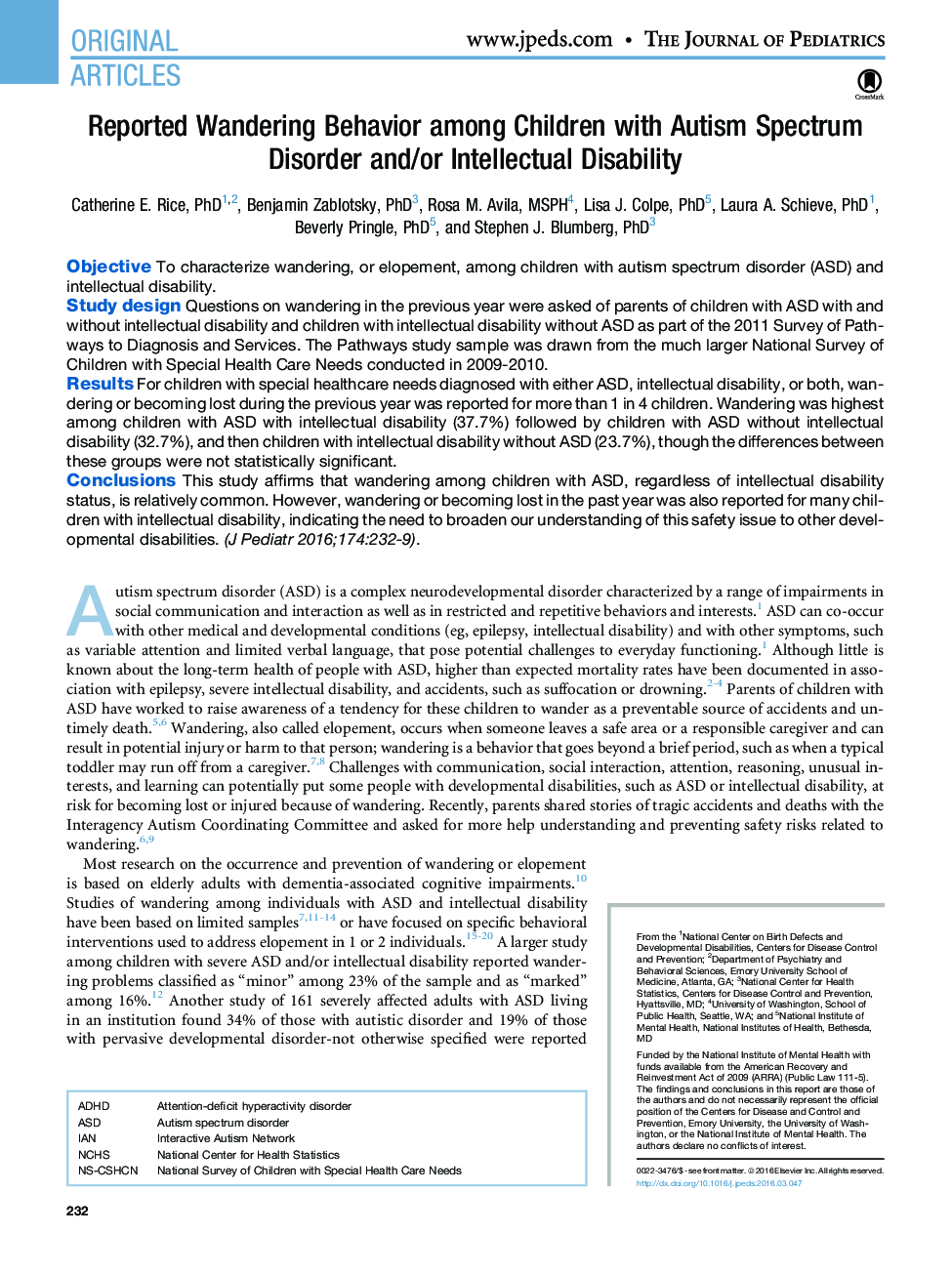| Article ID | Journal | Published Year | Pages | File Type |
|---|---|---|---|---|
| 6218954 | The Journal of Pediatrics | 2016 | 10 Pages |
ObjectiveTo characterize wandering, or elopement, among children with autism spectrum disorder (ASD) and intellectual disability.Study designQuestions on wandering in the previous year were asked of parents of children with ASD with and without intellectual disability and children with intellectual disability without ASD as part of the 2011 Survey of Pathways to Diagnosis and Services. The Pathways study sample was drawn from the much larger National Survey of Children with Special Health Care Needs conducted in 2009-2010.ResultsFor children with special healthcare needs diagnosed with either ASD, intellectual disability, or both, wandering or becoming lost during the previous year was reported for more than 1 in 4 children. Wandering was highest among children with ASD with intellectual disability (37.7%) followed by children with ASD without intellectual disability (32.7%), and then children with intellectual disability without ASD (23.7%), though the differences between these groups were not statistically significant.ConclusionsThis study affirms that wandering among children with ASD, regardless of intellectual disability status, is relatively common. However, wandering or becoming lost in the past year was also reported for many children with intellectual disability, indicating the need to broaden our understanding of this safety issue to other developmental disabilities.
